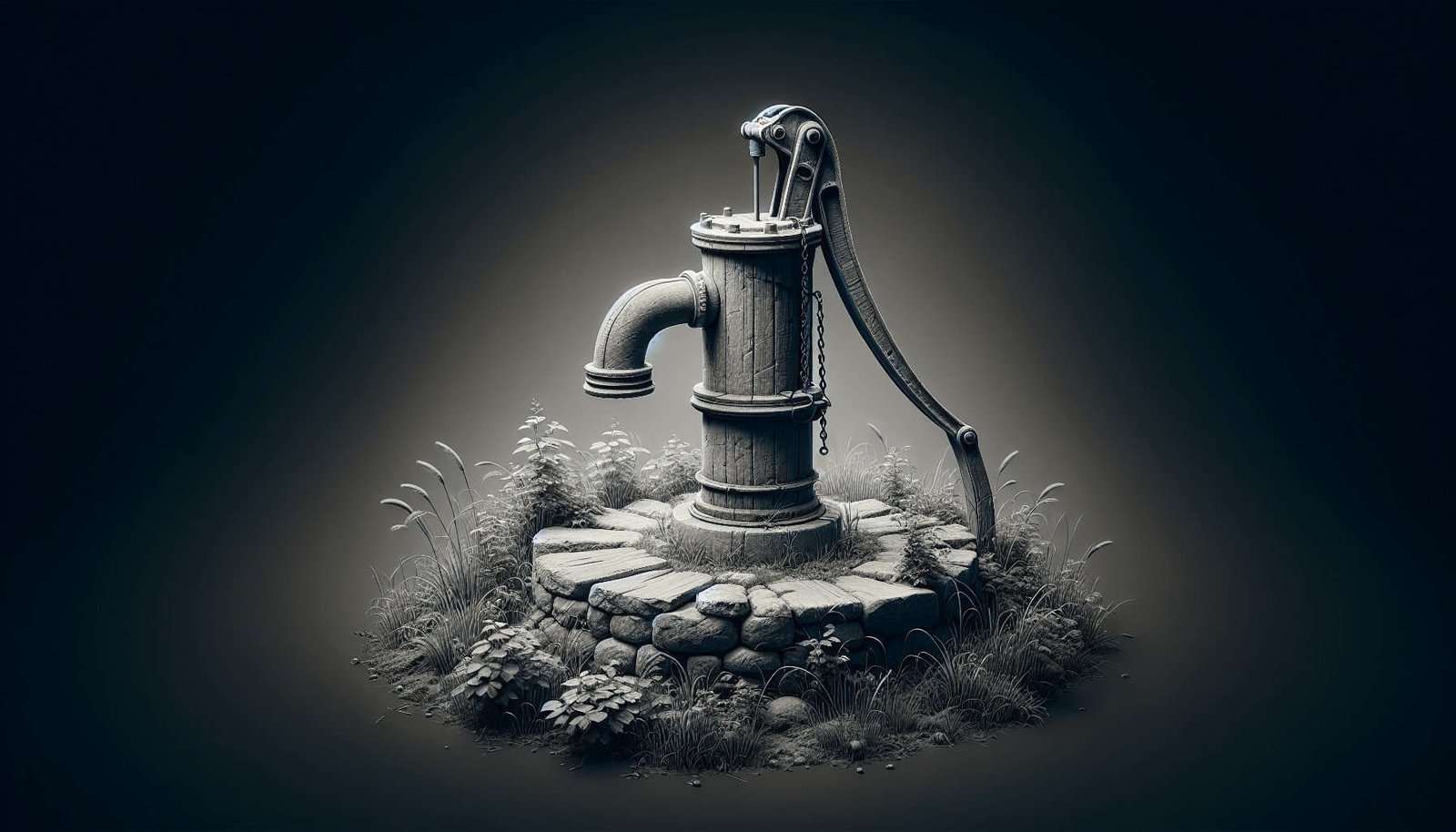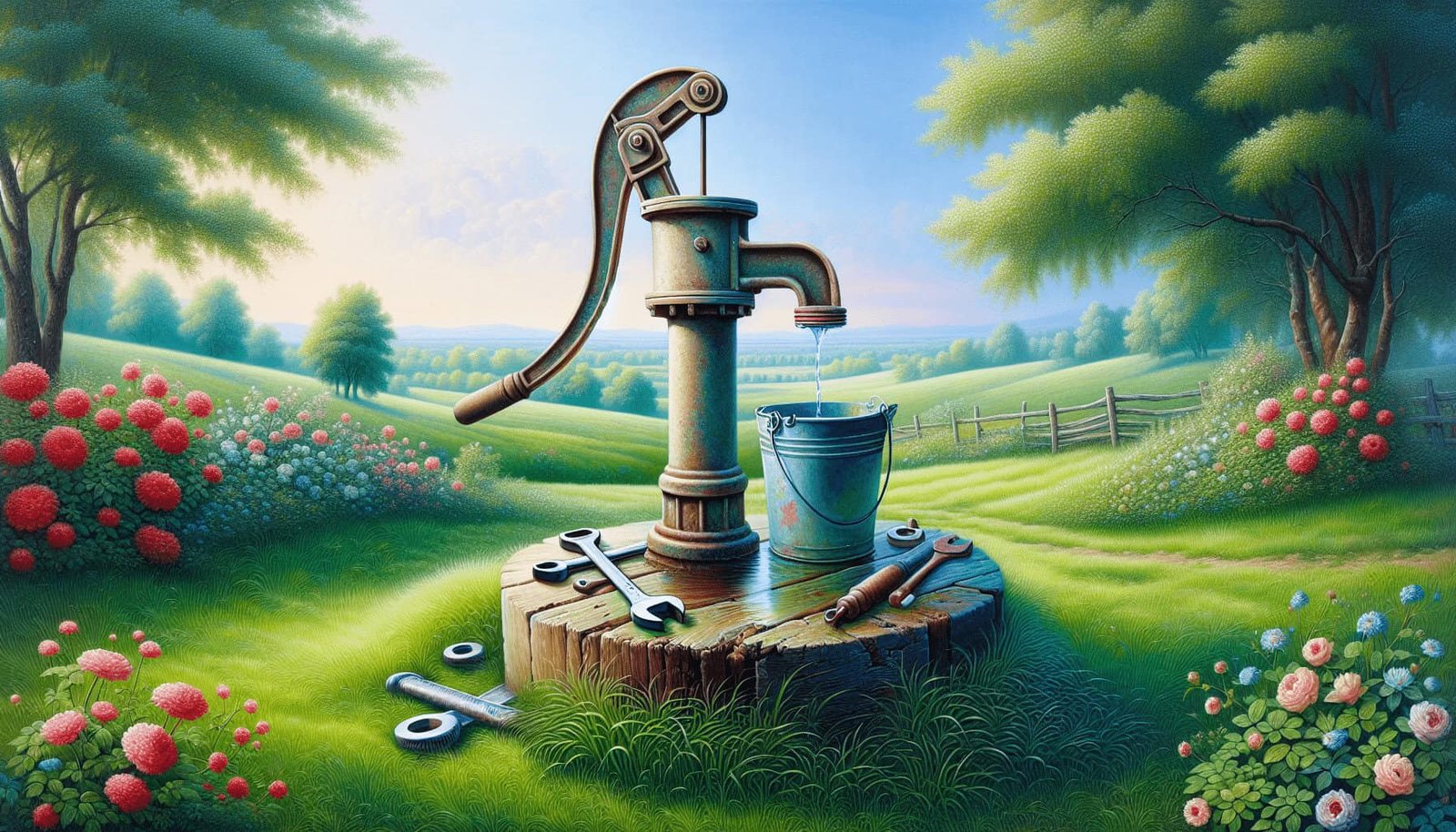Have you ever wondered how to maintain and repair a hand pump well system? Whether you rely on a hand pump well system for your primary water source or use it as a backup, knowing how to keep it in good working condition is essential. Let’s walk through the steps and information you’ll need to ensure your hand pump well system continues to provide clean, reliable water for your household or property.
Understanding the Basics of Hand Pump Well Systems
What is a Hand Pump Well System?
A hand pump well system is a manual mechanism used to draw water from a well. Unlike electric pumps, these systems operate using the physical effort of the user. They are reliable, especially in areas without access to electricity, making them an excellent solution for rural areas, emergency situations, or as a sustainable water source.
Types of Hand Pump Well Systems
There are several types of hand pumps, each suited for different depths and uses. Here are the main types you’ll encounter:
| Type of Hand Pump | Best For | Depth Range |
|---|---|---|
| Suction Pump | Shallow wells | Up to 25 feet |
| Lift Pump | Medium-depth wells | 25 to 50 feet |
| Deep Well Pump | Deep wells | Over 50 feet |
Understanding which type of pump you have will help you in maintaining and repairing it correctly.
Regular Maintenance for Hand Pump Well Systems
Importance of Maintenance
Regular maintenance is key to ensuring your hand pump well system remains functional and efficient. By performing routine checks and upkeep, you can prevent minor issues from becoming major repairs.
Daily and Weekly Checks
Daily and weekly checks can help you spot problems early on and ensure the smooth operation of your hand pump well system.
- Inspect for Leaks: Look around the base of the pump and the handle for any signs of water leaks.
- Operate the Pump: Pump water daily to ensure it flows smoothly and consistently.
- Listen for Unusual Sounds: Check for any strange noises, such as grinding or squealing, which could indicate a problem.
Monthly Maintenance
Monthly maintenance involves more detailed checks and minor adjustments to keep the system in top shape. Here’s what to do every month:
- Lubricate Moving Parts: Apply a food-grade lubricant to the pump handle and any other moving parts to reduce wear and tear.
- Check Water Quality: Test the water for any changes in taste, color, or odor. This can indicate contamination or mineral buildup.
- Inspect Seals and Gaskets: Make sure all seals and gaskets are intact and not cracked or worn out.
Annual Maintenance
Annual maintenance is more comprehensive and involves a thorough inspection of the entire system:
- Remove and Inspect the Pump: Take the pump apart to check for any wear and damage.
- Clean the Well: Use a well-cleaning solution to sanitize the well and remove any sediment buildup.
- Replace Worn Parts: Check for any parts that show signs of wear and replace them as needed.

Common Problems and How to Fix Them
Low or No Water Flow
If your pump is producing little to no water, several issues could be the cause. Here are steps to diagnose and resolve the problem:
- Check the Water Table: Ensure that the water table hasn’t dropped below the pump’s intake level.
- Inspect the Foot Valve: The foot valve might be clogged or damaged. Clean or replace it as needed.
- Examine the Check Valve: Ensure the check valve is functioning correctly and allowing water to flow up into the pump.
Leaks
Leaks can occur around joints, gaskets, or the pump itself. Here’s how to troubleshoot and repair leaks:
- Tighten Loose Connections: Make sure all connections are secure and tighten any that are loose.
- Replace Gaskets: If gaskets are worn or damaged, replace them with new ones to ensure a watertight seal.
- Seal Cracks: Use a waterproof sealant to repair any cracks in the pump body or pipes.
Handle Issues
If the handle of your pump is hard to operate or feels loose, it may affect the pump’s efficiency. Address handle issues as follows:
- Lubricate the Handle: Apply lubricant to reduce friction and make pumping easier.
- Check for Wear and Tear: Inspect the pump handle for signs of wear. Replace any parts that appear damaged.
- Adjust the Handle: Ensure the handle is properly aligned and adjusted to provide optimal leverage.
Strange Noises
Unusual noises can indicate internal issues within the pump. Here’s what to do:
- Lubricate Moving Parts: Apply lubricant to reduce noise from friction between moving parts.
- Check for Debris: Inspect the pump for any debris that might be causing noises and remove it.
- Inspect Internal Components: Disassemble the pump and check for any components that may be worn or damaged, and replace them as needed.
Tools and Supplies for Maintenance and Repair
Essential Tools
Having the right tools on hand will make maintenance and repairs easier and more efficient. Here are some essential tools you should have:
- Adjustable Wrench
- Pipe Wrench
- Screwdriver Set
- Lubricant (food-grade)
- Waterproof Sealant
- Plumber’s Tape
Essential Supplies
Stock up on these supplies to ensure you have what you need for regular maintenance and minor repairs:
- Replacement Gaskets and Seals
- Foot Valve
- Check Valve
- Well-Cleaning Solution
- Replacement Parts (specific to your pump model)

Professional Help vs. DIY: When to Call a Professional
Minor Issues
For minor issues such as leaks, low water flow, or handle adjustments, DIY repairs can be effective. Using the tools and supplies mentioned, you can resolve these problems yourself with some basic knowledge and effort.
Major Issues
Major issues, such as pump disassembly or well sanitation, might require professional expertise. If you’re unsure about how to proceed, or if the problem persists despite your efforts, it’s best to contact a well specialist.
Safety Considerations
Safety is paramount, especially when working with water systems. Always ensure you are following proper safety protocols, like turning off any connected electrical systems and wearing appropriate protective gear.
Prolonging the Life of Your Hand Pump Well System
Regular Use
Regularly using your hand pump well system can help prolong its life. Avoid letting the pump sit unused for long periods, which can cause parts to seize or degrade.
Proper Storage
If you need to store the pump for any period, make sure it’s stored in a dry, cool place. Disassemble the pump, clean it thoroughly, and lubricate moving parts before storage to prevent rust and corrosion.
Upgrading Components
Upgrading certain components can enhance the longevity and efficiency of your pump. Consider using stainless steel parts, which are more durable and less prone to corrosion.

Environmental Considerations
Water Conservation
Hand pump well systems are a great way to promote water conservation. Use water sparingly and consider implementing rainwater harvesting to supplement your well water supply.
Sustainability
Using and maintaining a hand pump well system is an eco-friendly option. It reduces your dependency on electrical pumps, promoting sustainability.
Safe Disposal of Materials
When replacing parts, ensure you dispose of old components responsibly. Some materials can be recycled, while others need to be disposed of in accordance with local environmental regulations.
Frequently Asked Questions
How Often Should I Service My Hand Pump Well System?
It’s recommended to perform basic checks daily or weekly, more thorough maintenance monthly, and a complete service annually.
What Should I Do if My Pump is Producing Cloudy Water?
Cloudy water may indicate contamination or sediment buildup. Test the water quality and clean the well if necessary. If the issue persists, consult a professional.
Can I Use Household Lubricants on My Pump?
Always use food-grade lubricants to avoid contaminating your water supply. Household lubricants may contain harmful chemicals that are not safe for use with drinking water systems.
Why is My Pump Handle Squeaking?
A squeaky handle usually indicates that lubrication is needed. Apply a food-grade lubricant to the handle and any other moving parts to reduce friction and eliminate the noise.
Is it Normal for My Pump to Get Hot During Operation?
While some warmth is normal due to friction, excessive heat can indicate a problem. Check for proper lubrication and make sure there are no obstructions causing the pump to overwork.

Conclusion
Maintaining and repairing a hand pump well system may seem daunting, but with the right knowledge and tools, it’s entirely manageable. Regular maintenance will ensure your system remains efficient and reliable, providing you with a sustainable and secure water source for years to come. Enjoy the peace of mind that comes with a well-maintained hand pump well system!

